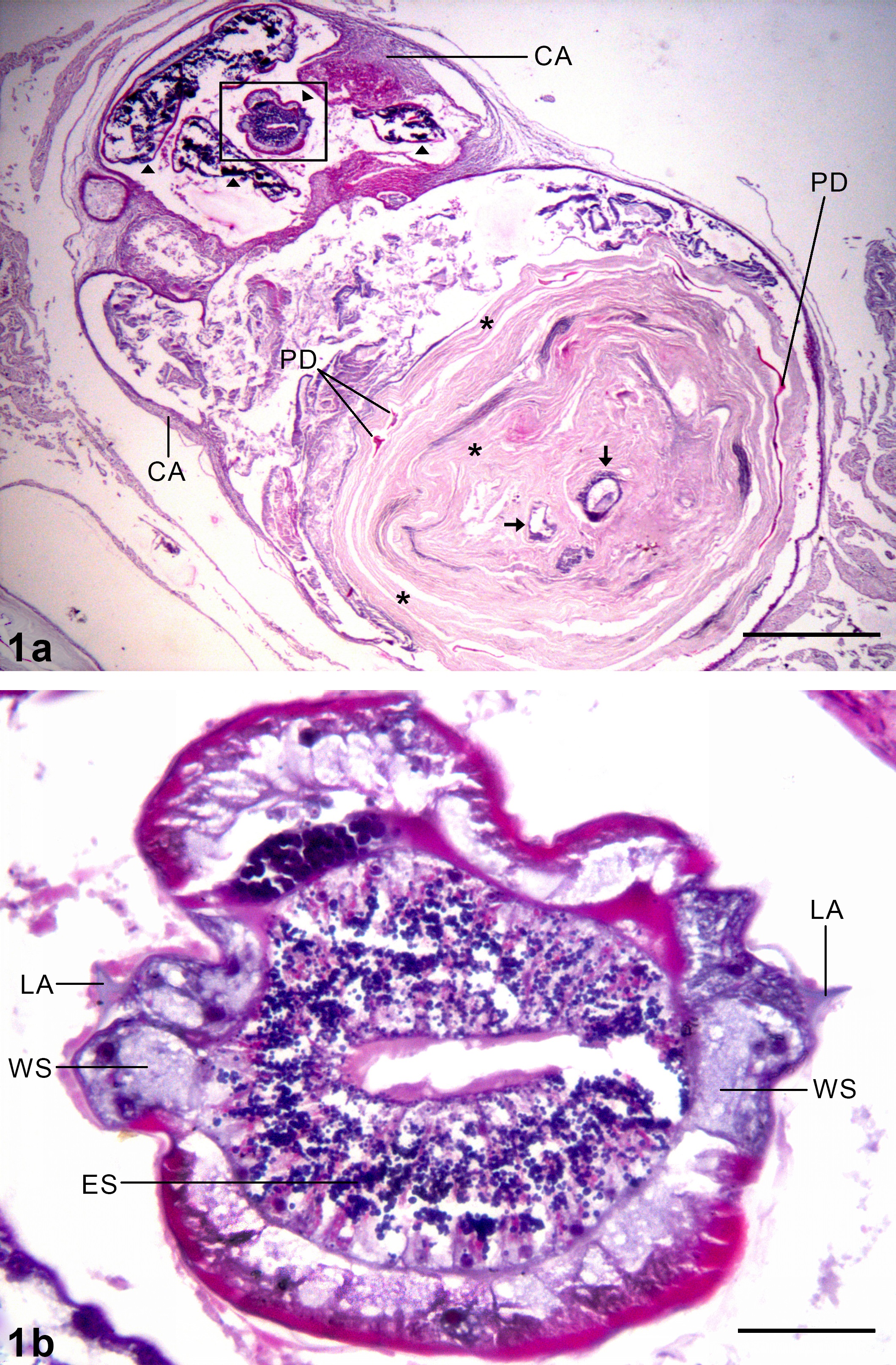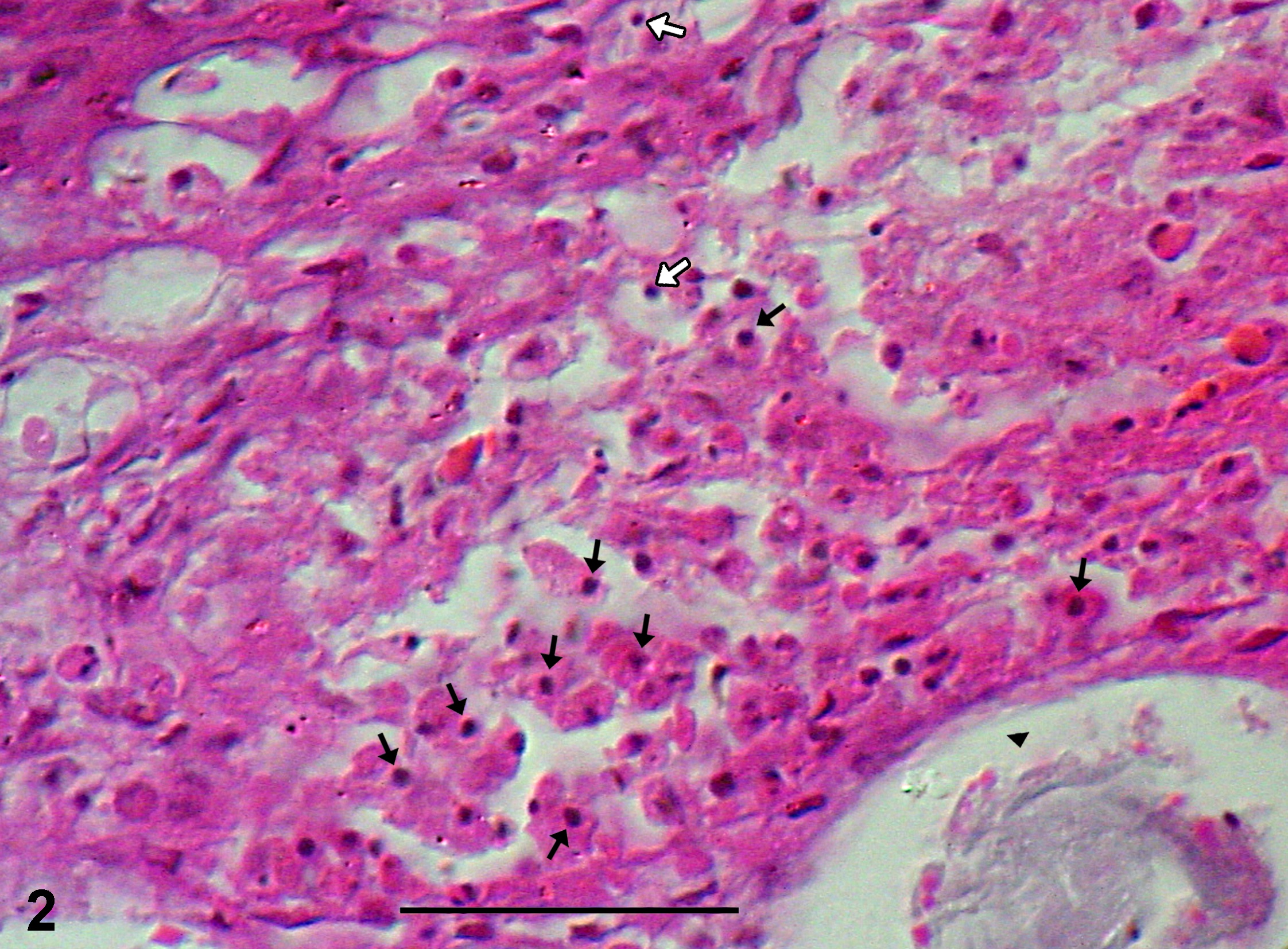Abstract
Priacanthus arenatus is a fish that occurs in the waters of the western Atlantic Ocean and has few records of parasitism. This study aimed to report histological changes caused by the larvae of Hysterothylacium deardorffoverstreetorum. Between July and December, 2013, 30 samples of P. arenatus were obtained from fish markets in the cities of Niterói and Rio de Janeiro, state of Rio de Janeiro, Brazil. Fragments of spleen, liver, stomach wall and mesentery tissues containing nodules and free parasites were extracted to histopathological study. Through histological analysis it was verified that these nodules consisted of connective tissue capsules, in which the parasites were located, with granulomatous inflammation mainly comprised of macrophages and lymphocytes. These nodules also consisted of a central portion of acellular amorphous material, formed by concentric layers, which was slightly basophilic and contained tunnels and, sometimes, parasite debris. The presence of tunnels in acellular amorphous material suggests that the larvae are initially located at the center of the nodules and then they migrate to the surface.
Keywords:
Hysterothylacium deardorffoverstreetorum; histopathology; Priacanthus arenatus; atlantic bigeye

 Thumbnail
Thumbnail
 Thumbnail
Thumbnail

